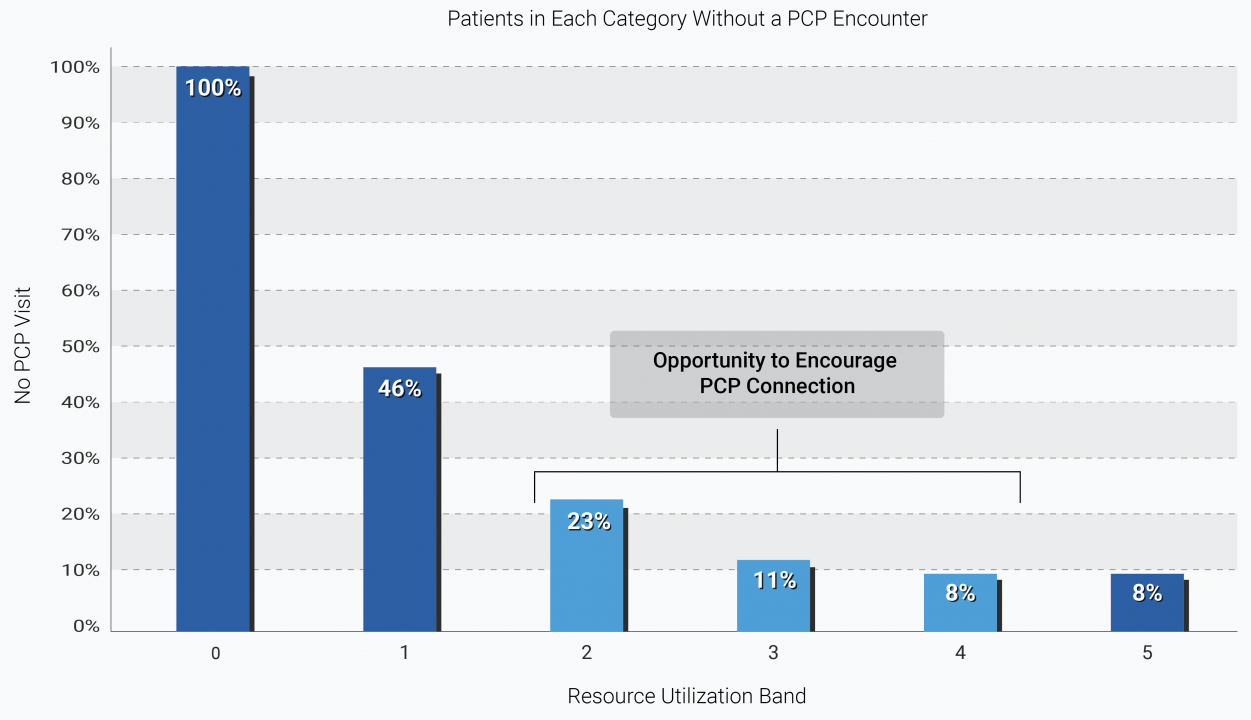

Are you a provider, payor or population health organization looking for a quick tune-up to your existing strategy and planning? Then look no further. In this series of posts, we’ll be sharing 7 quick wins the ACG System offers its users.
Primary health care is essential to optimizing health, managing acute health needs and chronic conditions, and helping patients navigate more complex health care needs. Primary care providers (PCPs) can identify, treat, and manage chronic disease, and in many cases prevent complications or worsening. Patients with routine primary care have fewer disease complications, acute needs, and health care costs than those who do not access primary care. So how can organizations ensure patients are fully utilizing the benefits of PCP care? This is where the ACG System can help.
ACG System users can rapidly identify patients with chronic disease and moderate-to-high health care needs who have not accessed primary care services.* By sorting a patient population using the ‘generalist seen’ marker, users can quickly find out which patients have had a recent primary care visit, and which have not. When combined with the ACG System’s Resource Utilization Bands (RUBs), which break patients into groups based on anticipated health needs, users can easily identify patients who have not seen a PCP recently and may benefit from a visit.
Sarah Kachur, Executive Director of Population Health Analytics at Johns Hopkins HealthCare Solutions, recommends an initial focus on patients in RUB 2, 3 or 4 without a generalist seen. Patients in these groups will typically have acute medical needs or moderate chronic conditions that would benefit from generalist services, to prevent worsening and facilitate preventive screenings. Users may include RUB 5 patients in the analysis; however, those few RUB 5 patients without a generalist visit typically have serious conditions (such as oncology or frailty-related needs) that are being managed by a specialist.

The ACG System’s pre-existing measures and ability to easily drill down makes it easy to target patients who could benefit from primary care services. Providers can help patients reconnect with their PCP if they have a historical relationship with one, or assist in getting patients connected to a PCP if they don’t have one. All in all, this helps to provide essential preventive care, identify new health conditions early, and increase patient satisfaction with the health system. In our book, that’s a winning combination.
Quick Win #1: Optimize Enrollment in Existing Programs
Quick Win #2: Streamline Medication Needs
Quick Win #3: Effectively Manage Multimorbidity
While these techniques are focused on US customers, we have parallel suggestions for international ACG System users, developed by our team based in Europe with support from one of our UK users, Sollis. Please contact us for more information.
* The ACG System defines generalist as family medicine, internal medicine, geriatrician, preventive medicine, pediatrician, or, for women, OBGYN services.
Follow Us